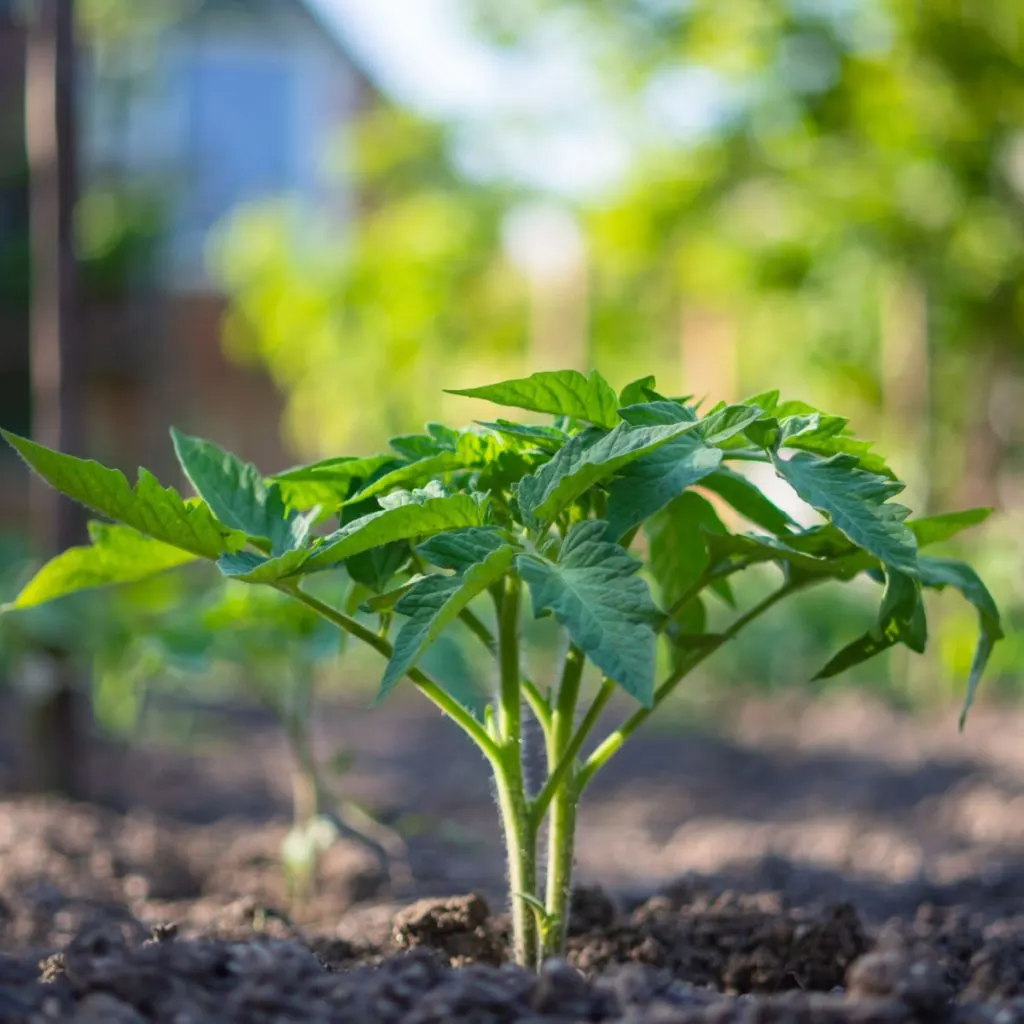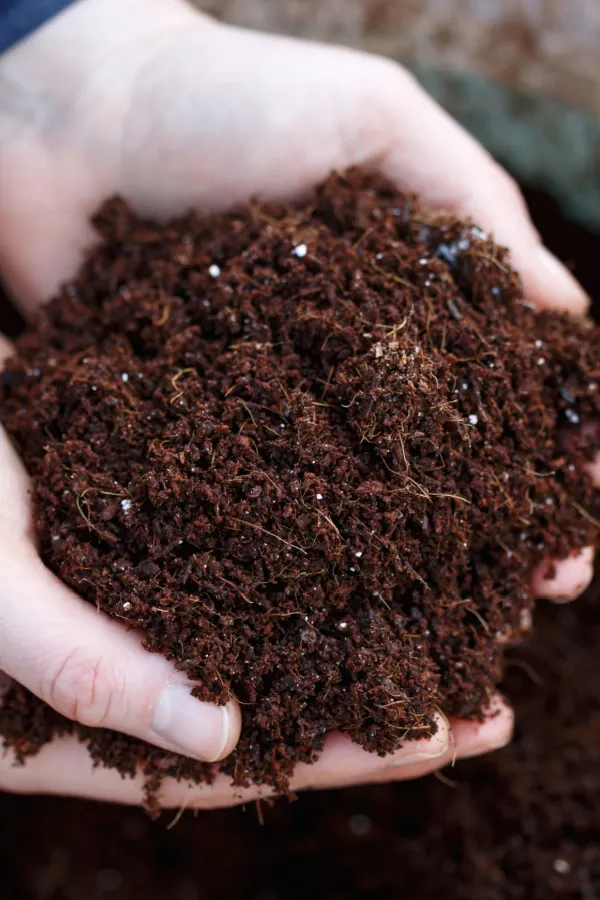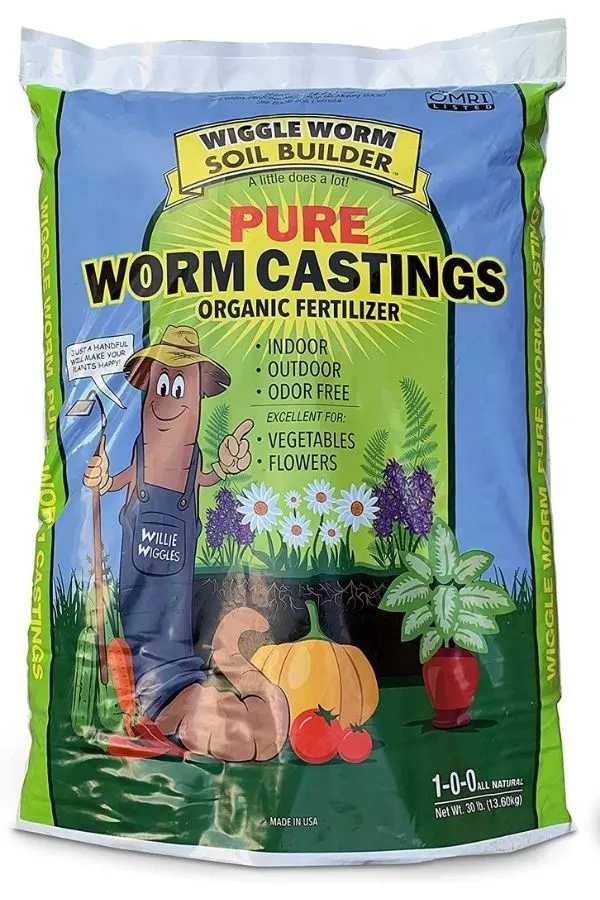If you want to get your tomatoes off to a fast, healthy start this year – and get a big harvest of juicy tomatoes this summer – it all starts with adding three crucial ingredients to the planting hole soil as you plant!
Tomato plants are one of the heaviest feeders of all vegetable plants – especially when they are young. When a tomato transplant first goes in the ground, it needs easy to absorb energy to fuel fast growth. Not just up top with its limbs and foliage, but even more importantly under the soil, as it grows and spreads its roots.
The roots of a tomato plant are its lifeline. They not only anchor the plant, but soak in water and nutrients to power growth. Plain and simple – without a strong root system, tomato plants will struggle to grow. And, of course, struggle to produce as well!

The good news is that you can easily give the roots of your tomato transplants a huge amount of power right as you plant them – all by placing 3 important ingredients in their planting hole. By mixing in the exact nutrients they need right by their roots, you can all but ensure your plants will establish fast, and grow strong and healthy.
Here is a look at the 3 powerful additives – ans exactly how to use the right amount to power quick growth!
3 Must Use Ingredients To Add To Your Soil When Planting Tomatoes
Worm Castings
When it comes to helping young tomato plants get off to a fast start, worm castings are at the top of the list. Castings are the manure of earthworms, and they have so many benefits for tomatoes. They truly are the secret weapon for growing amazing tomato plants!
For starters, worm castings are one of nature’s finest all-natural fertilizers. Not only do they have a perfectly balanced blend of nutrients, they are in a form that the roots of tomato plants can soak up with ease. But castings also can absorb massive amounts of moisture. Moisture that tomato plants can then soak up as well to stay perfectly hydrated.
If all of that wasn’t enough, castings also help to lighten the soil structure around the roots of tomato plants, allowing them to expand and establish quickly in the soil. And for tomatoes, a large root system is vital. The more roots that develop, the more energy it can absorb from the soil!
When planting tomatoes, mix 1/2 to a full cup of worm castings into every planting hole. And when finished planting, sprinkle another 1/4 to 1/2 cup around the soil surface. This will leach even more nutrients down to your tomatoes whenever you water or it rains. Product Affiliate Link: 100% Pure Worm Castings
You can continue to use castings on top of the soil sprinkling 1/2 cup every month for an extra low and slow dose of energy for your tomato plants.
Wood Ashes – 3 Must Use Ingredients To Add To Your Soil When Planting Tomatoes
Did you know that the leftover ashes from your fireplace or fire pit are ideal for putting in the soil around your tomato plants? It’s true – wood ash contains calcium and phosphorous – which happen to both be incredibly important for tomato plants.
Calcium is vital to young tomatoes as they grow and mature. Without enough in the soil to absorb, plants have trouble growing strong stems and branches. But even more, if there is a lack of calcium, tomato plants can have trouble producing fruit as well. And – even if they do, it is likely the tomatoes will suffer from black end rot.
Many gardeners add egg shells to their planting hole for calcium too. This is also a great idea – but using wood ash and egg shells together can really help to give tomato plants the calcium they need! See our article: Saving Egg Shells & Coffee Grounds – And How To Use Them To Power Plants & Soil For Free!
Listen In To Our Podcast Below On Pruning Tomatoes – And See How It Can Help Your Tomatoes Produce Even Better!
Phosphorous, on the other hand, is critical for tomato plants as well. It is vital for helping build cell wall strength in tomato plants. But most importantly, phosphorous is needed for flower development. The good news is that wood ash can help supply both of these to young tomato plants fast!
Last but not least, wood ashes also have the ability to hold water in the soil – helping tomato plants stay hydrated as they grow.
When planting, mix one to one and a half cups of wood ashes into every planting hole. One thing with ashes is to not overdo it. This is one time where more is not better. Too many ashes can actually change a soil’s pH, harming tomato growth in the process. So remember that a little goes a long way!
Compost – 3 Must Use Ingredients To Add To Your Soil When Planting Tomatoes
Last but certainly not least is using compost – and a lot of it – in your tomato planting hole. Unlike wood ashes, it’s hard to ever use to much compost. And can it ever help to power amazingly fast growth for new tomato transplants.

Like worm castings, compost is overflowing with the nutrients tomato plants need. And those nutrients are also easy for the roots of tomato plants to soak up. Compost also lightens the soil structure making it easy for tomato roots to grow – and helps to hold moisture in for the roots too. Affiliate Link: Charlies Bagged Compost
So how much compost is enough in the planting hole? It’s best when planting tomatoes to start by digging a deep planting hole. Then mix in a few cups of compost at the bottom with soil to make root growth easy. Finish by adding another cup or two in the soil mix around the sides of the roots of your tomato plants.
Just as with worm castings, putting a coat on top can also benefit plants. For that, spread out a few more cups around the root zone on top of the surface of the soil. One thing is for sure, by following the simple process of adding the 3 must use ingredients of worm castings, wood ash and compost – your tomato plants will be rocking!
Here is to getting your tomato plants off to their best start ever. And even more, to having your best harvest of tomatoes ever this year!
Simple Garden Life
Follow Our Facebook Page For Even More Great Tips! Simple Garden Life Facebook Page
Simple Garden Life is a website dedicated to keeping gardening fun, simple and enjoyable! We publish two new articles each week along with a new garden podcast episode every two weeks. This article may contain affiliate links.

